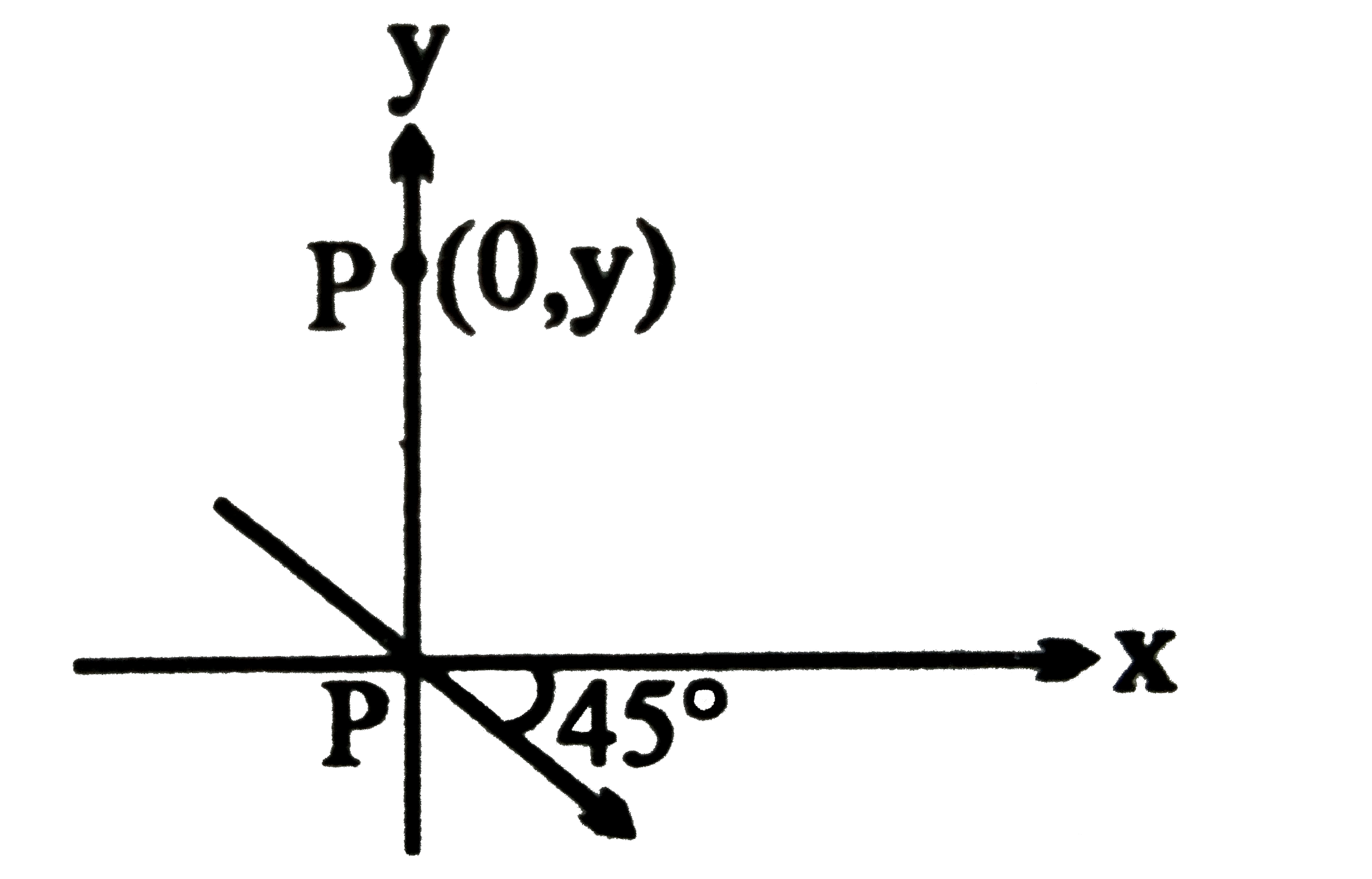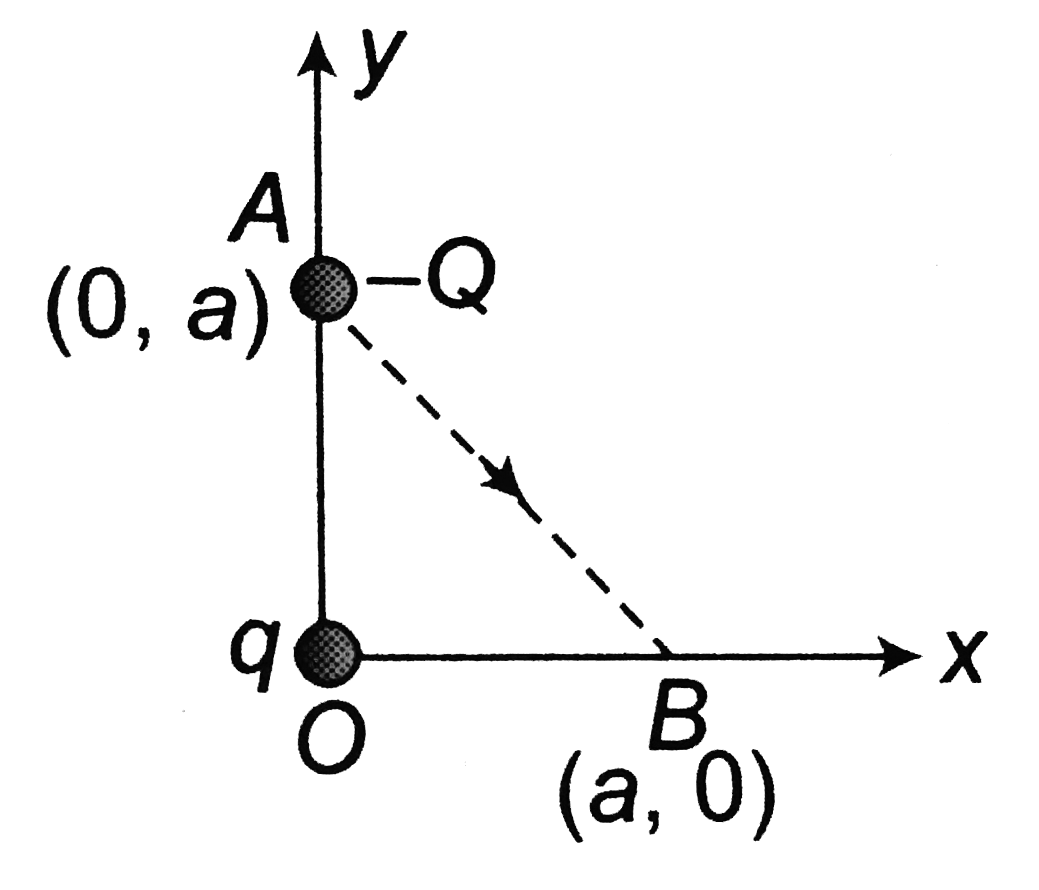An electric dipole is fixed at the origin of coordinates. Its moment is directed in the positive x- direction. A positive charge is moved from the point (r,0) to the point (−r,0) by an external agent. In this process, the work done by the agent is
positive and inversely proportional to r
positive and inversely proportional to r2
negative and inversely proportional to r
negative and inversely proportional to r2
The correct Answer is:D
To solve the problem of finding the work done by an external agent when moving a positive charge from point (r, 0) to point (-r, 0) in the presence of a fixed electric dipole, we can follow these steps:
Step 1: Understand the Configuration
We have an electric dipole fixed at the origin with its dipole moment →P directed along the positive x-direction. A positive charge is moved from point A(r,0) to point B(−r,0).
Step 2: Calculate the Electric Potential Energy at Points A and B
The electric potential V due to a dipole at a point →r is given by:
V=k→P⋅^rr2
where k is a constant, →P is the dipole moment, and ^r is the unit vector in the direction of →r.
At Point A (r, 0):
- The position vector →rA=(r,0).
- The unit vector ^rA=^i.
- The angle θA between →P and ^rA is 0∘.
Thus, the potential energy UA at point A is:
UA=kP⋅1r2=kPr2
At Point B (-r, 0):
- The position vector →rB=(−r,0).
- The unit vector ^rB=−^i.
- The angle θB between →P and ^rB is 180∘.
Thus, the potential energy UB at point B is:
UB=kP⋅(−1)r2=−kPr2
Step 3: Calculate the Work Done by the External Agent
The work done W by the external agent in moving the charge from point A to point B is equal to the change in potential energy:
W=UB−UA
Substituting the values we found:
W=(−kPr2)−(kPr2)=−kPr2−kPr2=−2kPr2
Step 4: Conclusion
The work done by the external agent is:
W=−2kPr2
We have an electric dipole fixed at the origin with its dipole moment →P directed along the positive x-direction. A positive charge is moved from point A(r,0) to point B(−r,0).
The electric potential V due to a dipole at a point →r is given by:
V=k→P⋅^rr2
where k is a constant, →P is the dipole moment, and ^r is the unit vector in the direction of →r.
- The position vector →rA=(r,0).
- The unit vector ^rA=^i.
- The angle θA between →P and ^rA is 0∘.
UA=kP⋅1r2=kPr2
- The position vector →rB=(−r,0).
- The unit vector ^rB=−^i.
- The angle θB between →P and ^rB is 180∘.
UB=kP⋅(−1)r2=−kPr2
The work done W by the external agent in moving the charge from point A to point B is equal to the change in potential energy:
W=UB−UA
Substituting the values we found:
W=(−kPr2)−(kPr2)=−kPr2−kPr2=−2kPr2
The work done by the external agent is:
W=−2kPr2
Similar Questions
An electric dipole is placed at origin in the xy plane with its orientation along the positive x-axis. The direction is electric field .
View SolutionA small electric dipole is placed at origin with its dipole moment directed along positive x-axis .The direction of electric field at point (2,2√2,0)
View SolutionA dipole is placed at origin of coordinate system as shown in figure, find the electric field at point P(0,y)
 .View Solution
.View SolutionA uniform electric field of magnitude 250V/m is directed in the positive x-direction. A+12μC charge moves from the origin to the point (x,y)=(20.0cm,5.0cm).
(a) What was the change in the potential energy of this charge?
(b) Through what potential difference did the charge move?View SolutionAssertion: A small electric dipole is moved translatonally from higher potential to lower potential in uniform electric field. Work done by electric is positive.
Reason: When a positive charge is moved from higher potential to lower potential, work done by electric field positive.View SolutionAs per this diagram a point charge +q is placed at the origin O. Work done in taking another point charge −Q from the point A(0,a) to another point B(a,0) along the staight path AB is:
 View Solution
View SolutionAs per this diagram a point charge +q is placed at the origin O. Work done in taking another point charge −Q from the point A(0,a) to another point B(a,0) along the staight path AB is:
 View Solution
View SolutionMoment of a force of magnitude 20 N acting along positive x-direction at point (3m,0,0) about the point (0,2,0) (in N-m) is
View SolutionA negative charge is moved by an external agent in the direction of electric field. Then
 .View Solution
.View SolutionA negetive charge is moved by an external agent in the direction of electric field. Then
 View Solution
View Solution
